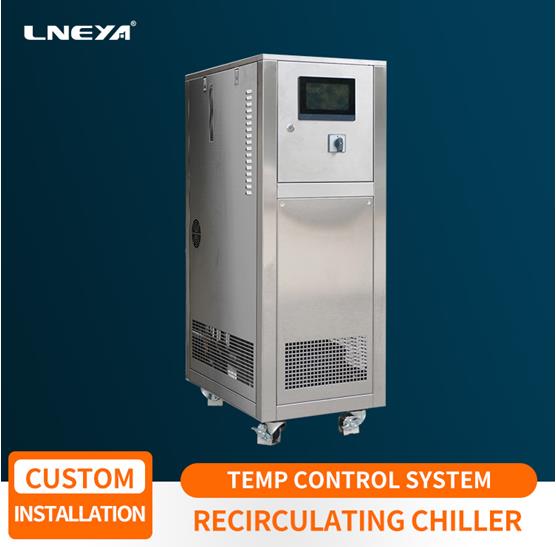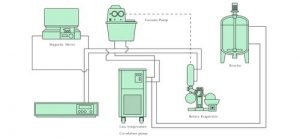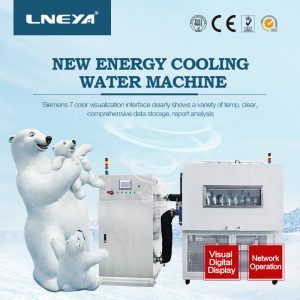A que devo prestar atenção ao adicionar refrigerante a um chiller arrefecido a água?
In our life, we believe that everyone is
very familiar with refrigeration. In the central air conditioning and
industrial production process cooling industry, small water-cooled chillers is
more common. This unit is composed of a compressor in the fuselage, a
horizontal shell and tube condenser, an evaporator, a thermal expansion valve,
and some related parts. Under the cooperation of these auxiliary parts, the
overall small water cooled chiller is compact in structure, convenient in
operation and control, and is popular among the public in the market.
For refrigeration systems that do not have
a high pressure reservoir and a low pressure vapor-liquid separator, the
control of refrigerant charge is particularly important. Because the
refrigeration system is a condenser and also acts as a high-pressure reservoir,
the refrigerant is stored in the condenser, and the condenser is cooled. The
heat dissipation area is reduced and the condensing pressure is increased,
resulting in a decrease in cooling capacity.
For the control of the refrigerant charge
of such small water-cooled chillers, the following methods are followed during
the filling process:
First, touch the temperature of the
condenser casing.
The upper outlet of the condenser outlet is
heated above the outlet, and the outlet below the outlet is cool. (There is a
description of the high temperature exhaust of the compressor in the inside.
The cooling indicates that the small water-cooled chillers is a liquid space.)
Second, look at the inspiratory pressure.
Corresponding to the temperature of the
refrigerant water in the evaporator. (That is, corresponding to the evaporation
temperature.)
Third, look at the compressor return pipe
temperature.
The high-temperature unit return pipe
should be cooled and dew, but it can be dew condensation to the compressor
return valve; the low-temperature unit return pipe should be frosted, but the
frost can be connected to the compressor return valve. If condensation or frost
builds up on the compressor casing, liquid refrigerant will enter the
crankcase, causing the compressor to run back and cause liquid
problem.
The above is a partial analysis of our
LNEYA technicians for water-cooled chillers. Regarding the specific use of our
water-cooled chillers, you can contact us sales@lneya.com for more detailed
instructions.
Recomendações relacionadas
-
Manutenção do Condensador em Chillers de Baixa Temperatura
1399Nos últimos anos, com a melhoria do nível de produção industrial da China, muitas máquinas e equipamentos industriais profissionais fornecem maior ajuda para diferentes produções industriais. Como um equipamento de refrigeração industrial muito prático, a l...
Ver detalhes -
Low-temperature coolant circulation pump used with rotary evaporator
1932The chemical and pharmaceutical fields are the largest end consumer markets for cryogenic coolant circulation pumps. With the increasing demand for low-temperature coolant circulation pumps in this market, the application of cryogenic pumps in the...
Ver detalhes -
Equipamento de teste de bateria de carro de energia nova para descrição da bateria
1511As matérias-primas da bateria de chumbo-ácido são fáceis de obter, o preço é relativamente baixo, o desempenho de descarga de alta taxa é bom, o desempenho de temperatura é bom, pode trabalhar no ambiente de -40 ~ + 60 ° C, adequado para carregamento flutuante, longo serviço ...
Ver detalhes -
Instruções para o congelador 100p de LNEYA
1880Quando o utilizador comprar e utilizar o congelador 100p, a LNEYA terá instruções de utilização relevantes que serão enviadas ao utilizador juntamente com o aparelho. Então, a que é que devo prestar atenção quando utilizar o congelador 100p? Ao receber o equipamento, o utilizador deve...
Ver detalhes
 LNEYA Refrigeradores industriais Fabricante Fornecedor
LNEYA Refrigeradores industriais Fabricante Fornecedor














